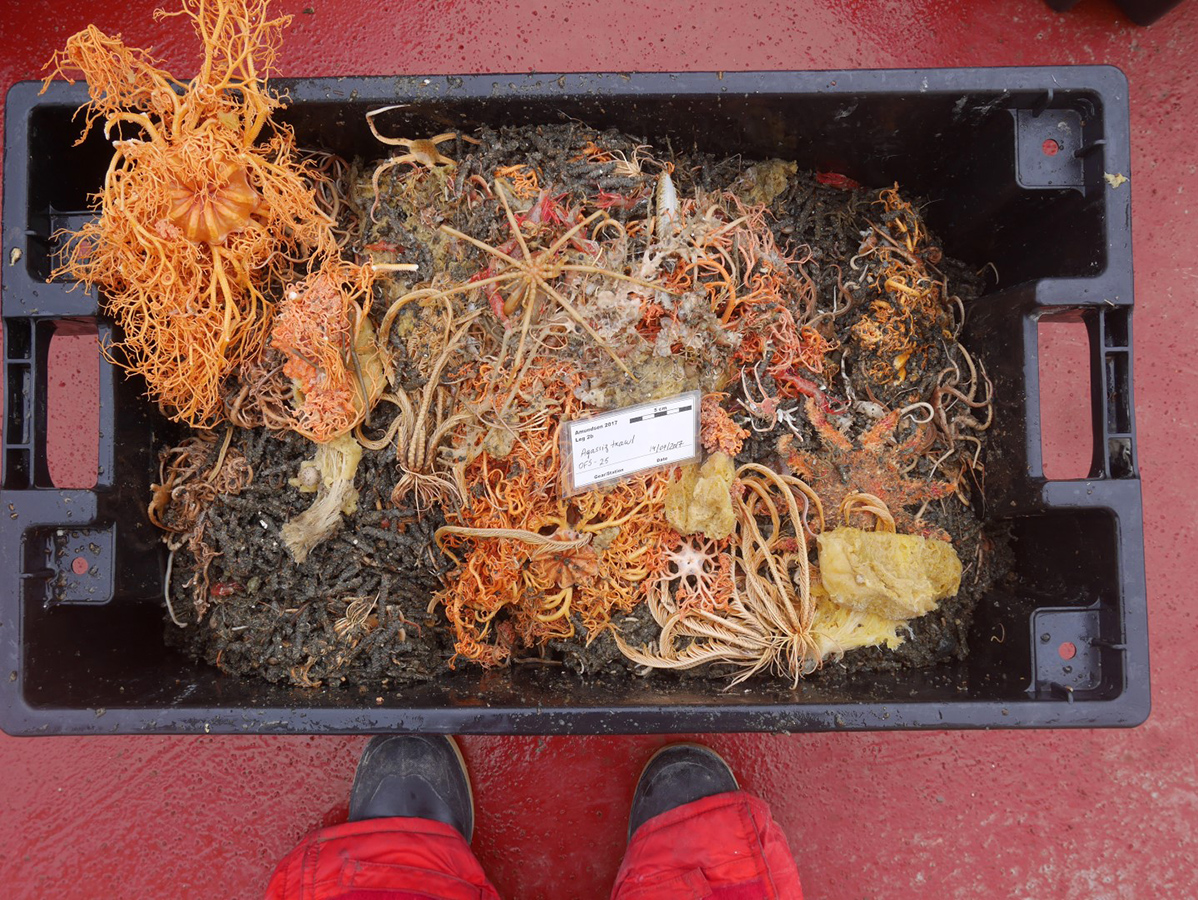
During the Arctic cruise, graduate student Curtis Dinn collected samples from trawl tows like this. Pictured here are sponges, sea spiders, basket stars, brittle stars, crinoids, shrimp, and tube worms. Photo credit: Curtis Dinn
When it comes to marine biodiversity, look no further than the Canadian Arctic, says graduate student Curtis Dinn. But you might need to look twice to understand what it is you're really seeing.
Dinn is one of the few scientists in the world studying sea sponges of the Canadian Arctic. Arctic deep water sponges in Canada are not well known. In fact, scientists are only familiar with a handful of species in the region. Arctic sponges also live in extremely cold and dark environments. "Because of the lack of sunlight, these sponges cannot rely on photosynthesizing symbionts in the way that tropical corals and sponges do. So, these sponges may be slow-growing and very long lived," explained Dinn, a biologist working on his master's with renowned sea sponge expert Sally Leys, professor in the Department of Biological Sciences.
Arctic sponges are a critical component of the marine ecosystem for two key reasons: first, sponges clean the oceans through filter feeding; and second, sponges form important habitat for many other organisms-including commercial fish.
"Sponges create a three-dimensional structure on otherwise barren habitat--either sand or rocks on the bottom of the ocean-just like coral," said Dinn."The reason that we want to know what species are there and where they live is that they are important nursery habitat for fish and other invertebrates. Commercial fish species lay their eggs there, and juvenile fish can take shelter in between the sponges."
Arctic cruise
Over the last two years, Dinn has collected dozens of samples of rare sea sponges on two cruises through the Canadian Arctic aboard the CCGS Amundsen. His research is focused on locating and identifying sponges in the Eastern Canadian Arctic, from the Northern labrador Sea to Nare's Strait, with the goal of understanding sponge biodiversity and improving conservation strategies for sponge habitat.
Currently, Dinn is authoring a paper on a new species found during the cruises, as well as describing the overall sponge population in Frobisher Bay. In fact, he found five species in Frobisher Bay never before been seen in Canada.
"Since sponges are so long-lived and slow-growing, when they are damaged or destroyed by fishing activity, oil and mineral extraction, or pollution, they don't grow back. They're wiped out," he explained. "The more we understand about what kinds of sponges we have and where we can find them, the better we can be at protecting them."
Dinn was recently recognized in the graduate student poster contest in marine sciences at the international Arctic Change 2017 Conference.